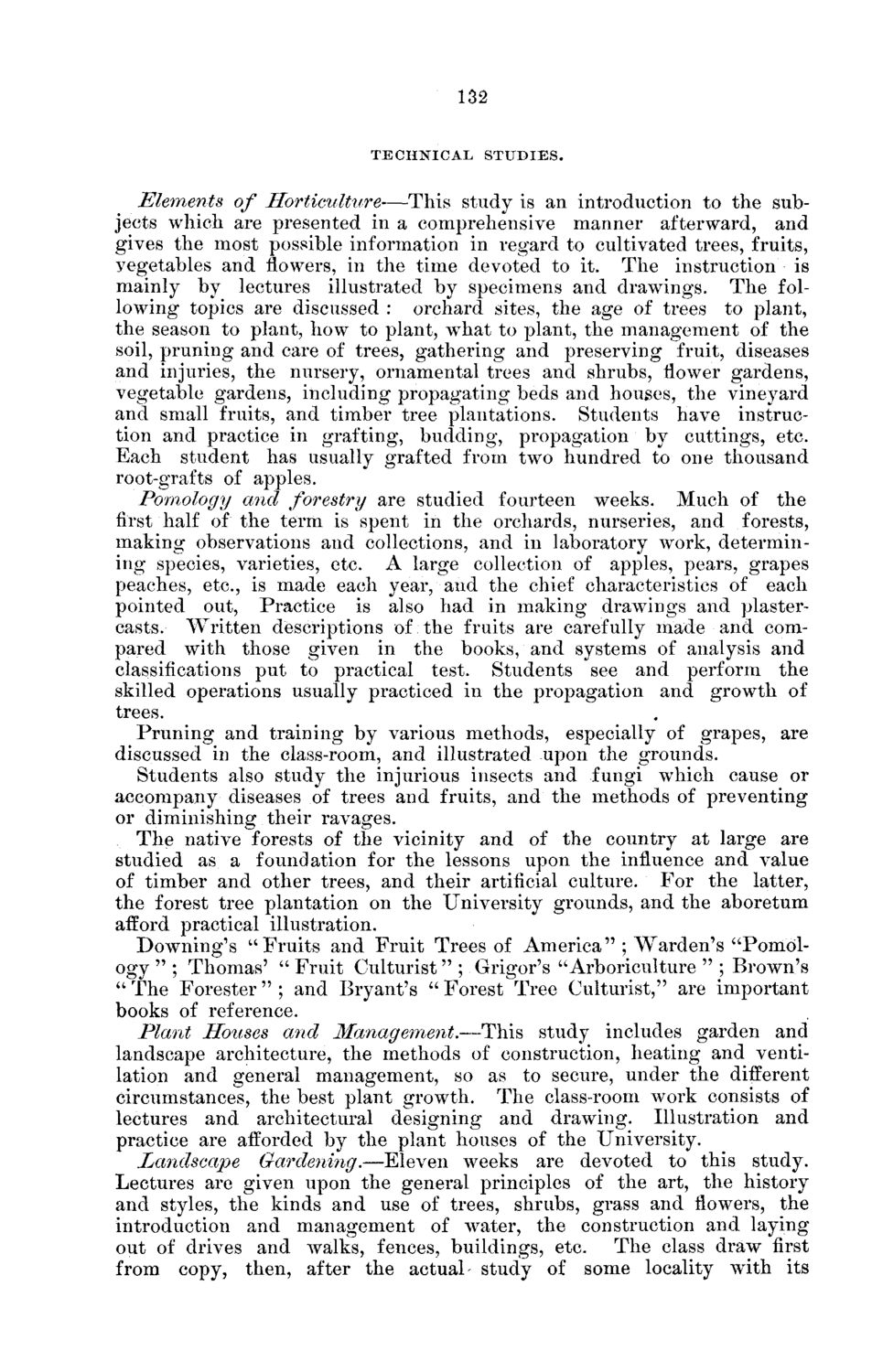| |
| |
Caption: Board of Trustees Minutes - 1878
This is a reduced-resolution page image for fast online browsing.

EXTRACTED TEXT FROM PAGE:
132 TECHNICAL STUDIES. Elements of Horticulture—This study is an introduction to the subjects which are presented in a comprehensive manner afterward, and gives the most possible information in regard to cultivated trees, fruits, vegetables and flowers, in the time devoted to it. The instruction is mainly by lectures illustrated by specimens and drawings. The following topics are discussed : orchard sites, the age of trees to plant, the season to plant, how to plant, wThat to plant, the management of the soil, pruning and care of trees, gathering and preserving fruit, diseases and injuries, the nursery, ornamental trees and shrubs, flower gardens, vegetable gardens, including propagating beds and houses, the vineyard and small fruits, and timber tree plantations. Students have instruction and practice in grafting, budding, propagation by cuttings, etc. Each student has usually grafted from two hundred to one thousand root-grafts of apples. Pomology and forestry are studied fourteen weeks. Much of the first half of the term is spent in the orchards, nurseries, and forests, making observations and collections, and in laboratory work, determining species, varieties, etc. A large collection of apples, pears, grapes peaches, etc., is made each year, and the chief characteristics of each pointed out, Practice is also had in making drawings and plastercasts. Written descriptions of the fruits are carefully made and compared with those given in the books, and systems of analysis and classifications put to practical test. Students see and perform the skilled operations usually practiced in the propagation and growth of trees. P r u n i n g and training by various methods, especially of grapes, are discussed in the class-room, and illustrated upon the grounds. Students also study the injurious insects and fungi which cause or accompany diseases of trees and fruits, and the methods of preventing or diminishing their ravages. T h e native forests of the vicinity and of the country at large are studied as a foundation for the lessons upon the influence and value of timber and other trees, and their artificial culture. For the latter, the forest tree plantation on the University grounds, and the aboretum afford practical illustration. Downing's " F r u i t s and Fruit Trees of America" ; Warden's "Pomology " ; Thomas' " Fruit Culturist" ; Grigor's "Arboriculture " ; Brown's " The F o r e s t e r " ; and Bryant's " Forest Tree Culturist," are important books of reference. Plant Houses and Management.—This study includes garden and landscape architecture, the methods of construction, heating and ventilation and general management, so as to secure, under the different circumstances, the best plant growth. The class-room work consists of lectures and architectural designing and drawing. Illustration and practice are afforded by the plant houses of the University. Landscape Gardening.—Eleven weeks are devoted to this study. Lectures are given upon the general principles of the art, the history and styles, the kinds and use of trees, shrubs, grass and flowers, the introduction and management of water, the construction and laying out of drives and walks, fences, buildings, etc. The class draw first from copy, then, after the actual study of some locality with its
| |